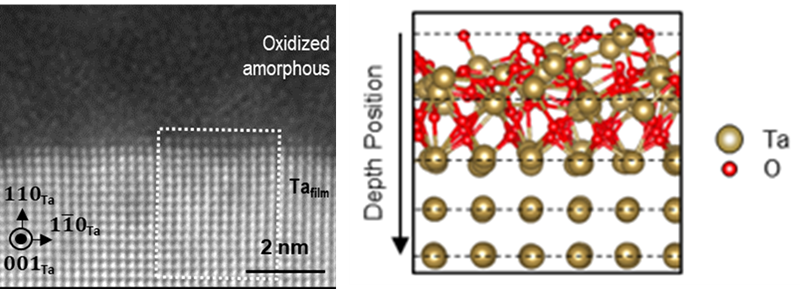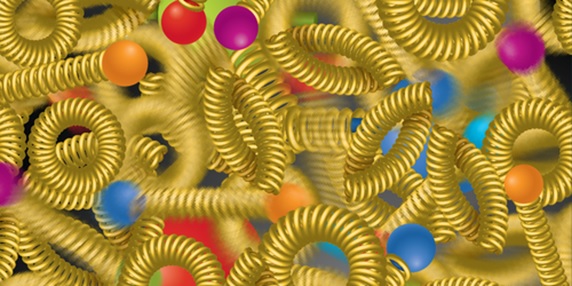This is a continuing profile series on the directors of the Department of Energy (DOE) Office of Science User Facilities. These scientists lead a variety of research institutions that provide researchers with the most advanced tools of modern science including accelerators, colliders, supercomputers, light sources and neutron sources, as well as facilities for studying the nano world, the environment, and the atmosphere.
Contributing Writer Credit: Evan Polisar is the Strategic Communications Specialist for the General Atomics Energy Group, [email protected].
Richard Buttery, a native of the United Kingdom, came to the United States in 2009 to join General Atomics and help plan the future of the DIII-D National Fusion Facility. Now a dual citizen and director of the DIII-D program, his admiration for the facility and his team has grown and grown.
“The DIII-D program is incredibly special,” he reflects while standing in the pit of the device—just inches from where plasmas are shaped and held at temperatures exceeding 100 million degrees Celsius. “DIII-D is at the forefront of fusion science and innovation, and the team here is the most dedicated group of people I have ever worked with.”
Before coming to DIII-D, Buttery spent 16 years with the UK Atomic Energy Authority, where he worked on the Mega Amp Spherical Tokamak (MAST) device as a Task Force Leader, and also on the Joint European Torus (JET)—the largest tokamak in the world. After joining General Atomics (GA), Buttery led the DIII-D scientific team for eight years. He has been an active member of the U.S. fusion community, serving as a member of the American Physical Society Division of Plasma Physics Executive Committee and the U.S. Burning Plasma Organization Council.
Buttery holds a PhD in Theoretical Particle Physics and a Bsc. in Physics with First Class Honors from the University of Manchester. He is a Fellow of the American Physical Society and the U.K. Institute of Physics. In spring 2021, he led a team of researchers in publishing a years-long study proposing a new design concept for a compact fusion pilot plant capable of generating electricity at a reduced cost.
What is a tokamak?
A tokamak is one of several types of devices used to produce and control fusion reactions. Tokamak devices use magnetic fields to shape and confine superheated plasmas to fusion conditions. The DIII-D tokamak shapes plasma to form a “D” shaped cross section. Tokamaks are designed to generate and withstand temperatures of 100-150 million degrees Celsius to mimic the same processes that powers the stars.
DOE Explains… offers straightforward explanations of key words and concepts in fundamental science. It also describes how these concepts apply to the work that the Department of Energy’s Office of Science conducts as it helps the United States excel in research across the scientific spectrum. For more information on nuclear fusion and DOE’s research in this area, please go to “DOE Explains nuclear fusion science,” DOE Explains plasma confinement,” DOE Explains high energy density plasmas,” DOE Explains tokamaks,” and DOE Explains nuclear fusion reactions.”
General Atomics operates the DIII-D facility, the largest magnetic fusion device in the United States, on behalf of the U.S. Department of Energy Office of Science. While fusion research has been an important part of the portfolio at General Atomics going back to the 1950s, DIII-D has been in operation with continuous upgrades since the mid-1980s. As a world-leading research facility, DIII-D is pioneering the science and innovative techniques that will enable the development of fusion as an energy source.
One of DIII-D’s primary missions is workforce development and the training of the next generation of fusion scientists. DIII-D hosts collaborators from nearly every major fusion institution in the United States, including the national laboratories, universities, and industry. The facility has more than 100 participating institutions and a research team of more than 400 scientific users from around the world.
Buttery points to the flexibility of DIII-D and the diagnostics installed on the device as tools that set it apart from other fusion devices in the world. “There are more than 70 diagnostics looking into the machine, measuring everything from density to turbulence, heat flux, and magnetic structure. The device is both the most diagnosed and the most flexible tokamak in the world.
“This means we can rapidly develop new solutions for fusion energy and apply our understanding of physics to future fusion power plants. To reach this goal, we are researching how to contain plasmas with sufficient pressure and efficiency in self-sustaining ‘steady state’ conditions.”
“My time is divided between overseeing the program, launching new initiatives, and strategic planning,” says Buttery. “Every day is a bit of a balancing act. On days when experiments are planned, I always start by listening in on the experimental science briefing, so I know the state of the machine, and what research is being conducted that day. The same morning, I may be leading a meeting focused on long-term planning, hosting a tour of the facility, or helping to work through specific challenges with my team. No two days are the same.”
Buttery stresses that the most important aspect of leading DIII-D is the close working relationships among the people on his team. “I first came to DIII-D because I wanted to find solutions for fusion energy. Now I get to help shape which solutions we prioritize and the resources we dedicate to them. It really is great to be able to set our direction, but no amount of planning or decision-making yields results without the team behind the device. Through continual upgrades, this device remains on the cutting edge of fusion research and is unmatched in innovation and scientific discovery.
“But at the end of the day,” notes Buttery, “it is nothing without its people. Our team is large and multi-institutional, and I continually engage in discussions with key collaborators about how to deliver parts of the program or support their goals. We are incredibly fortunate to have some of the very best talent here.”
“Almost all of our experiments at DIII-D focus on making fusion better,” says Buttery. “In a tokamak, you can change the shape of the plasma and move current, particles, and heat around to improve efficiency. You can add heat in different places and change structures in the plasma. For the most part, our experiments focus on specific challenges facing practical fusion energy. We are working to solve the remaining physics problems so that we can apply our knowledge in the future. Everything we do is laying the groundwork for future fusion reactors.”
He stresses that research at DIII-D is focused on the fusion community and supporting projects like ITER (the massive fusion experiment under construction in France), private industry, and a future Fusion Power Plant concept. “Continuing to innovate and improve our understanding of the ‘how’ and ‘why’ a plasma behaves as it does will help us develop the solutions for the future. Critical questions need to be answered and understood, and that is our top priority.”
A typical experiment at DIII-D has 30 plasma “shots” in a day, each lasting approximately 5 seconds. “This is long enough to do what we want and measure the impacts of the experiment in the plasma. Our experiments control plasmas in real time and can adjust the approach to meet the goal,” adds Buttery.
He also points to an initiative he began at DIII-D, focusing on the understanding of fundamental plasma physics as an exciting direction for the facility. “Fusion research has led to many spin-off technologies and applications, and so it is only natural that we explore broader national priorities.
“For example, we recently used DIII-D to test heat-shield materials for spacecraft. With DIII-D we can replicate the pressures and heat that spacecraft are exposed to. Such experiments have incredible benefits to broader plasma science, but also shed light on fusion energy, such as advanced materials and their interactions with a hot plasma,” explains Buttery. “Our Frontiers campaign is exploring fundamental issues of how particles and waves interact, and magnetic fields reconnect, the same processes that happen in solar winds or stars, or when solar flares hit the earth. DIII-D presents a unique opportunity to test physics in controlled ways.”
“The number one thing is to remember your team,” says Buttery. “My experience at DIII-D would be profoundly different if it weren’t for this team. I am so grateful to work with a group of people who are as talented, as driven, and as committed as those at DIII-D. The people in this group always go beyond to help each other and work together towards solutions to problems. That cannot be taken for granted. DIII-D is a tight-knit community, and I have a strong sense of responsibility to everyone working here.
“Secondly, a director must remember the big picture. One of the hardest things to learn is how to let lower priorities be delegated so that you can focus on direction. If you fully trust your team, you can focus on what is important rather than continuously stopping to address issues that come up. I would tell others to set aside time for the high-level things and keep perspective. By doing so, you will keep your facility and your team focused and motivated. If you can accomplish this, you can meet any challenge.”
In Fiscal Year 2021, DIII-D and the other 27 user facilities welcomed over 33,000 researchers from academic, industry, and government laboratories in all 50 states and the District of Columbia – to perform new scientific research. For details on the DOE Office of Science User Facilities, please go to User Facilities.
Please go to Profiles of User Facilities Directors to read more articles on the directors for the Office of Science user facilities.
The Office of Science is the single largest supporter of basic research in the physical sciences in the United States and is working to address some of the most pressing challenges of our time. For more information, please visit https://www.energy.gov/science.
sourced from https://www.sourcearu.com



